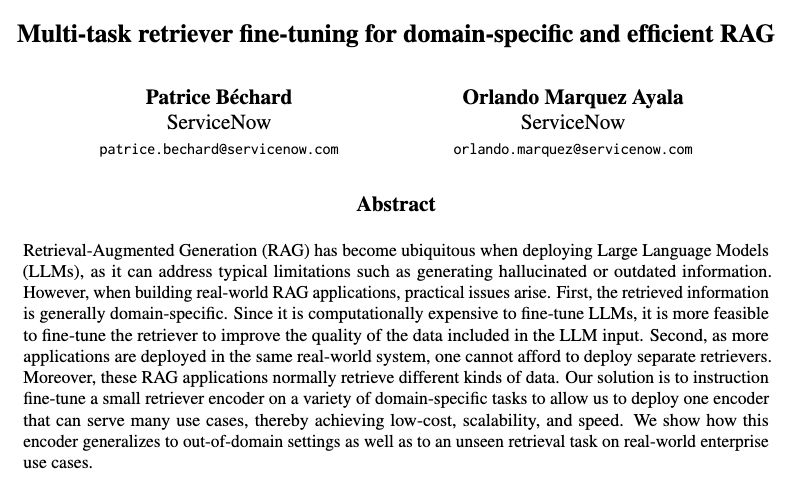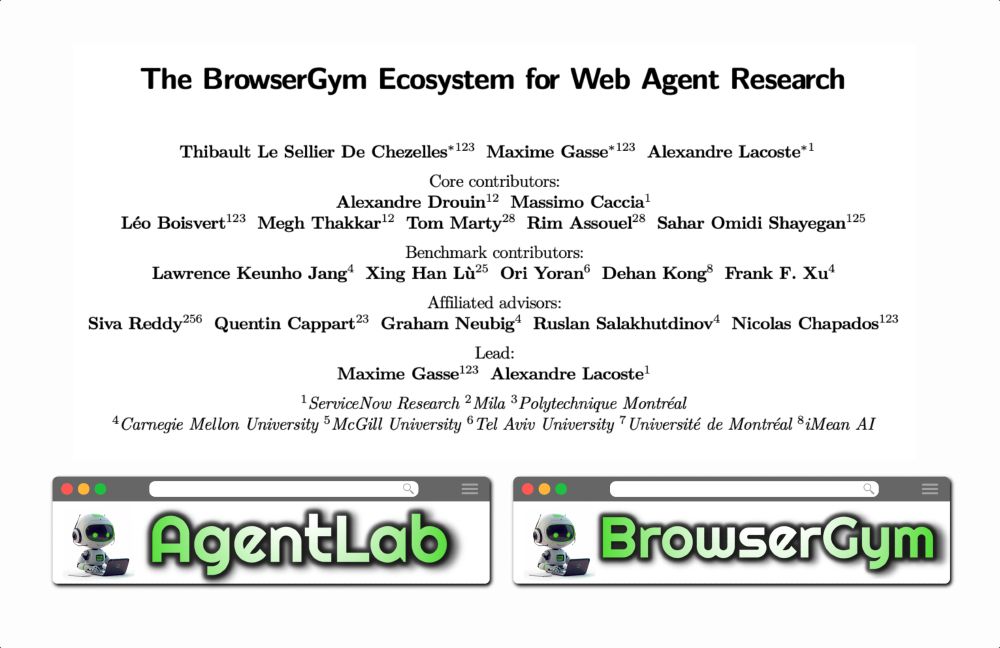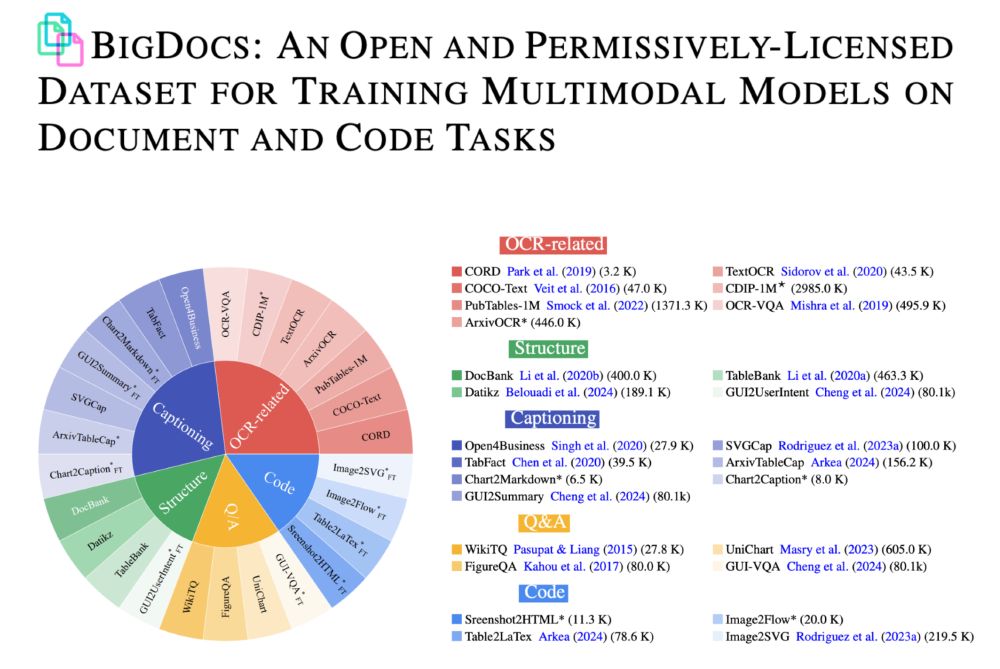
💫𝐒𝐭𝐚𝐫𝐅𝐥𝐨𝐰: 𝐆𝐞𝐧𝐞𝐫𝐚𝐭𝐢𝐧𝐠 𝐒𝐭𝐫𝐮𝐜𝐭𝐮𝐫𝐞𝐝 𝐖𝐨𝐫𝐤𝐟𝐥𝐨𝐰 𝐎𝐮𝐭𝐩𝐮𝐭𝐬 𝐅𝐫𝐨𝐦 𝐒𝐤𝐞𝐭𝐜𝐡 𝐈𝐦𝐚𝐠𝐞𝐬
We use VLMs to turn 𝘩𝘢𝘯𝘥-𝘥𝘳𝘢𝘸𝘯 𝘴𝘬𝘦𝘵𝘤𝘩𝘦𝘴 and diagrams into executable workflows 🖍️→⚙️
🔗 arxiv.org/abs/2503.218...
📝 tinyurl.com/3utdbn97%E2%...
#Sketch2Flow #AI #VLM
💫𝐒𝐭𝐚𝐫𝐅𝐥𝐨𝐰: 𝐆𝐞𝐧𝐞𝐫𝐚𝐭𝐢𝐧𝐠 𝐒𝐭𝐫𝐮𝐜𝐭𝐮𝐫𝐞𝐝 𝐖𝐨𝐫𝐤𝐟𝐥𝐨𝐰 𝐎𝐮𝐭𝐩𝐮𝐭𝐬 𝐅𝐫𝐨𝐦 𝐒𝐤𝐞𝐭𝐜𝐡 𝐈𝐦𝐚𝐠𝐞𝐬
We use VLMs to turn 𝘩𝘢𝘯𝘥-𝘥𝘳𝘢𝘸𝘯 𝘴𝘬𝘦𝘵𝘤𝘩𝘦𝘴 and diagrams into executable workflows 🖍️→⚙️
🔗 arxiv.org/abs/2503.218...
📝 tinyurl.com/3utdbn97%E2%...
#Sketch2Flow #AI #VLM
💫𝐒𝐭𝐚𝐫𝐅𝐥𝐨𝐰: 𝐆𝐞𝐧𝐞𝐫𝐚𝐭𝐢𝐧𝐠 𝐒𝐭𝐫𝐮𝐜𝐭𝐮𝐫𝐞𝐝 𝐖𝐨𝐫𝐤𝐟𝐥𝐨𝐰 𝐎𝐮𝐭𝐩𝐮𝐭𝐬 𝐅𝐫𝐨𝐦 𝐒𝐤𝐞𝐭𝐜𝐡 𝐈𝐦𝐚𝐠𝐞𝐬
We use VLMs to turn 𝘩𝘢𝘯𝘥-𝘥𝘳𝘢𝘸𝘯 𝘴𝘬𝘦𝘵𝘤𝘩𝘦𝘴 and diagrams into executable workflows 🖍️→⚙️
🔗 arxiv.org/abs/2503.218...
📝 tinyurl.com/3utdbn97%E2%...
#Sketch2Flow #AI #VLM
We present a recipe to build a custom retriever that handles multiple retrieval tasks simultaneously for domain-specific RAG applications 🧵

We present a recipe to build a custom retriever that handles multiple retrieval tasks simultaneously for domain-specific RAG applications 🧵
In this TMLR paper, we dive in-depth into #BrowserGym and #AgentLab. We also present some unexpected performances from Claude 3.5-Sonnet

In this TMLR paper, we dive in-depth into #BrowserGym and #AgentLab. We also present some unexpected performances from Claude 3.5-Sonnet
An open, transparent multimodal dataset designed for:
📄 Documents
🌐 Web content
🖥️ GUI understanding
👨💻 Code generation from images
We’re also launching BigDocs-Bench:
➡️ Document, Web, GUI Visual reasoning
➡️ Converting images into JSON, Markdown, LaTeX, SVG, and more!

An open, transparent multimodal dataset designed for:
📄 Documents
🌐 Web content
🖥️ GUI understanding
👨💻 Code generation from images
We’re also launching BigDocs-Bench:
➡️ Document, Web, GUI Visual reasoning
➡️ Converting images into JSON, Markdown, LaTeX, SVG, and more!


